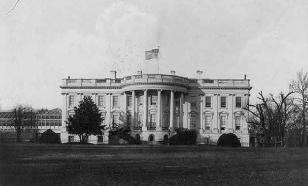Children of Death in WWI
German intelligence used child spies in WWI
Crowds of homeless boys and girls gathered at railway stations, marketplaces, and especially around Russian military units back in 1914. There were a lot of those ragged little children everywhere. There was nothing surprising about the situation, since the war was just beginning. However, the sneaky abilities of these little creatures were really something special.
Russian counter-intelligence officers detained agent Leonard Rembitsky near the deployment of a military unit. Mr. Rembitsky told a long and a detailed story. He told intelligence officers how the Germans forced him to become their agent in order to spy in the Russian rear. He given the tasks of finding out information pertaining to the Russian artillery troops and the food prices in the city of Riga. After being forced to become a German spy, Rembitsky had to go to a spy school in Warsaw. Leonard Rembitsky was only 12 years of age when he was nabbed.
The school for juvenile spies, from where a young James Bond came from, counted 72 boys and 300 girls, as well as several women. All of them were enlisted against their own will. When Russian intelligence officers were listening to Leonard Rembitsky’s story, not one of them had the wish to smile. Everything was more than just serious. The Germans made child spies carry out their goals and tasks. As a guarantee, the Germans arrested the children’s parents or close relatives. They threatened to shoot them if the child decided to run away or refuse an order.
When small children were given tasks, they were also given a little cash as well: 15 rubles for boys and 20 rubles for girls. No documents were given to them. Boys were dressed in black school coats with white buttons or short black jackets, black boots, gray shirts, and gray pants. Girls wore black coats, black dresses, and black boots. Everything was black and gray.
After the children were educated, they were attached to various military units of Russian troops. A troop number was their passwords to return from a task. Under the disguise of refugees, spy kids were able to penetrate deep behind enemy lines and collect information that was extremely valuable for Germany. As a rule, soldiers missed their families, so they were happy to accept a little homeless boy or girl in their detachment. Soldiers treated them like their own kids. No one of them could ever guess that those little children were trained to blow up trains and bridges. These little “angels of death” set fires at defense factories and warehouses and blew up trains.
The women who worked for the German intelligence services were basically prostitutes. As a rule, theGermans selected gorgeous, slim, and interesting women for their espionage purposes. There were a couple of special spy schools in Warsaw. One of them trained both men and women. Basically, all of the spy women were experienced as prostitutes. The Germans would send them behind enemy lines and put them to work.
Yet, beautiful women and lovely children were not all that the German intelligence used in 1915 against the Russian military. Various charitable and commercial organizations attempted to obtain access to the rear as well. There was an organization that rendered financial help to German captives in Siberia, simultaneously establishing contacts with them. There was a special bureau organized in China. This bureau helped German war prisoners escape to China, where they were later provided with passports of neutral countries. In China, the German intelligence set up an organization that provided Austrian and German spies with fake documents. The documents were produced in Shanghai.
Another spy organization that operated during WWI particularly “worked” in the field of commerce. It was established in 1908, and by the year 1915, it embraced the whole of Russia. The so-called “company” looked like an organization of the German variety. It had its offices in Riga, Warsaw, Kiev, Odessa, Rostov-on-Don, and at Russia’s huge Nizhni Novgorod Fair. All positions of authority in that company were taken by Germans.
The company’s “spokespeople” were sent to a Russian region. They had maps with them, on which they would mark new railways, bridges, and other important objects. When they came back from their “business trips,” they would write special reports and then send the spy material to Berlin. A group of such spies was detained in April of 1915. All of them were German women.
Economic research was the most convenient form of espionage. A senior official of the Nizhni Novgorod Fair, Sergey Speransky, was caught writing letters for a Copenhagen organization called Studying Society in the Wartime. This was another organization that worked for Germany. Sergey Speransky provided the organization with detailed information about the economic activity of one of the largest trade fairs in Russia.
Of course, this is not the complete list of foreign spy ruses that was used during WWI. For instance, German and Austrian special services used special written characters in their correspondence. Those specific characters were used in postcards, letters, telegrams, and even on luggage labels.
A.Osipov Candidate of philosophy science, N.Rezontova, editor-in-chief of NTA Privolzhye
Translated by Dmitry Sudakov
Subscribe to Pravda.Ru Telegram channel, Facebook, RSS!



